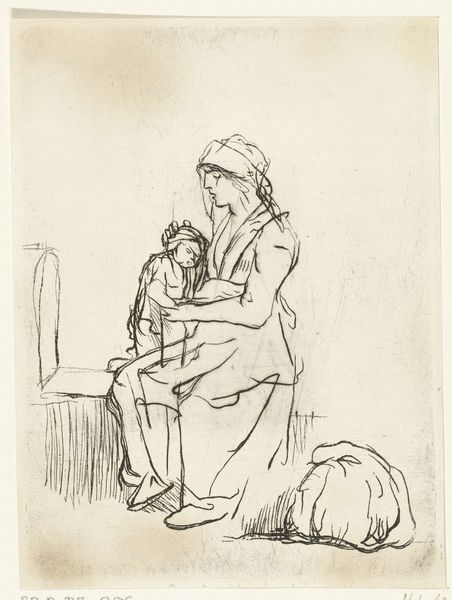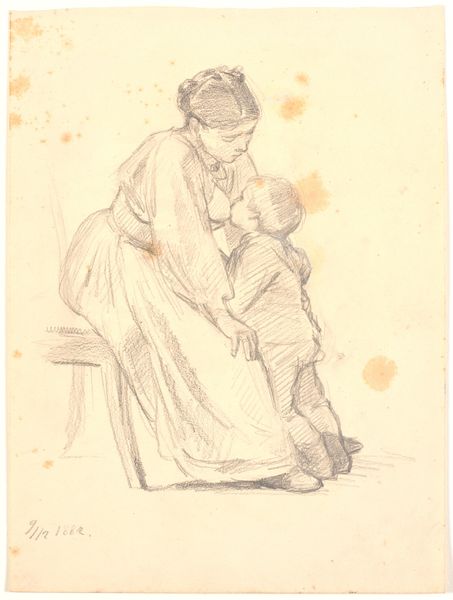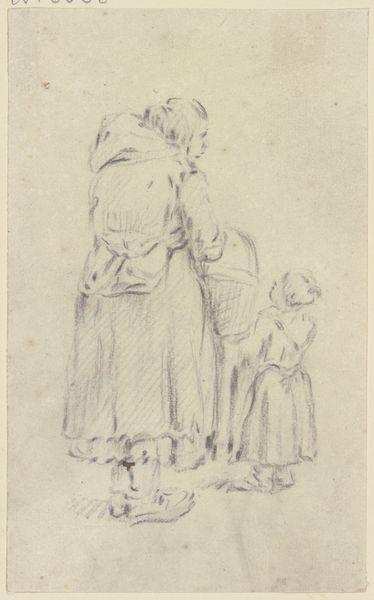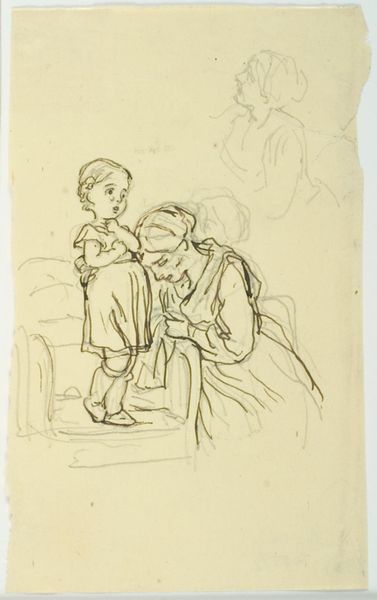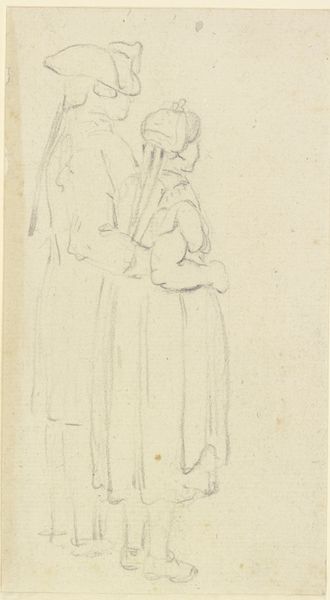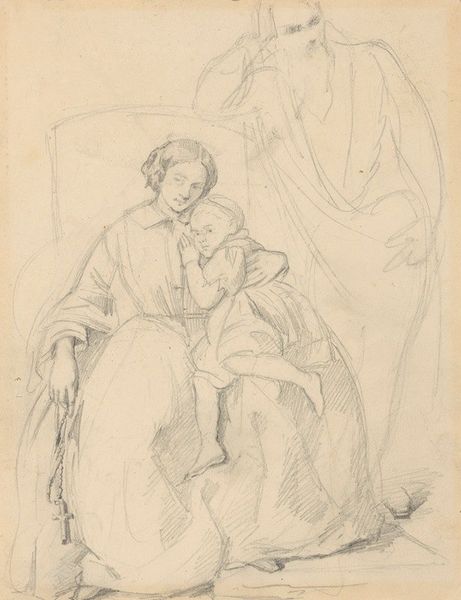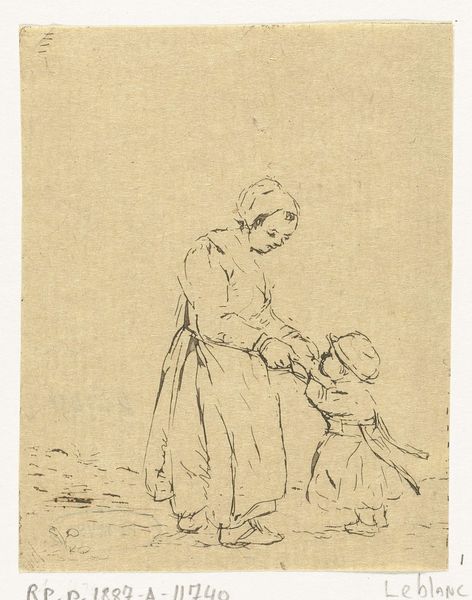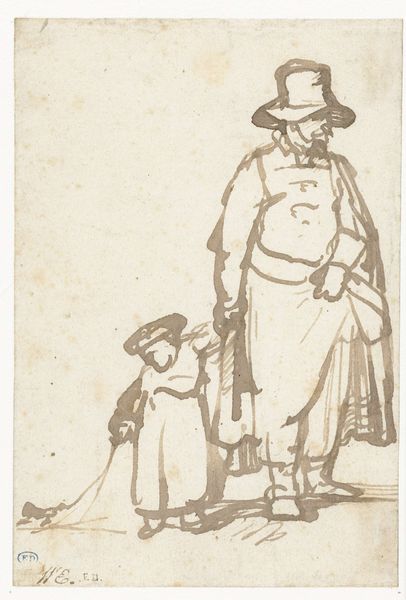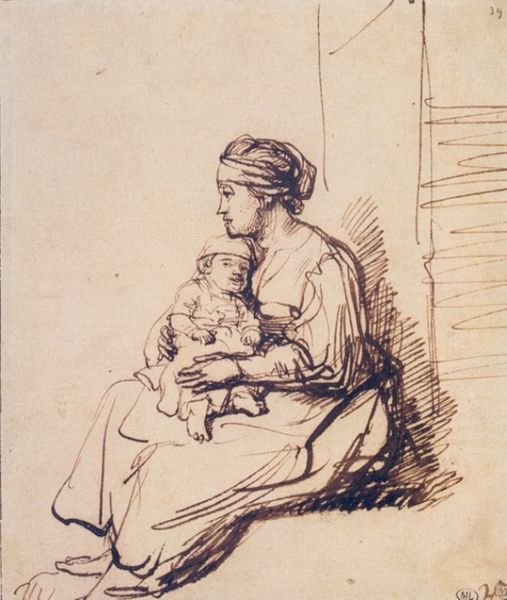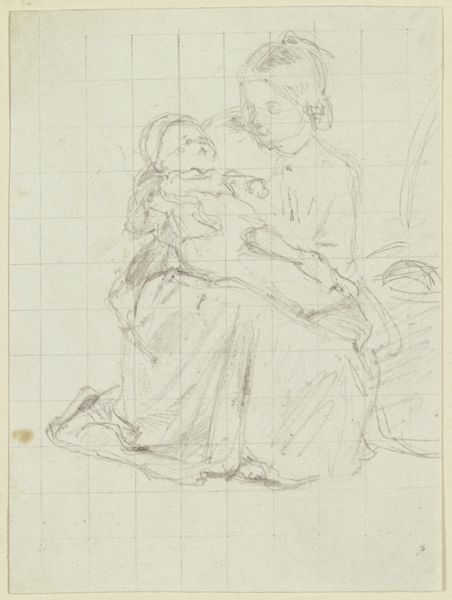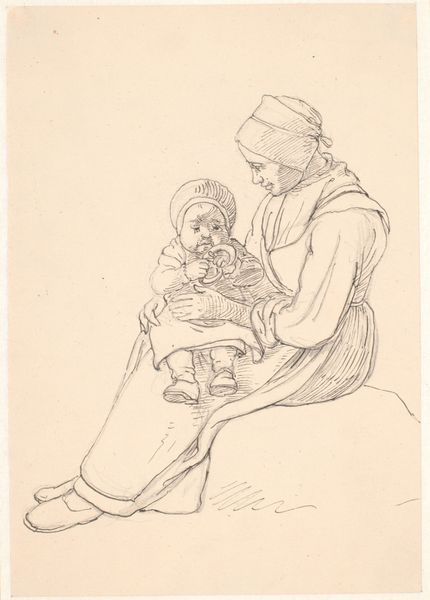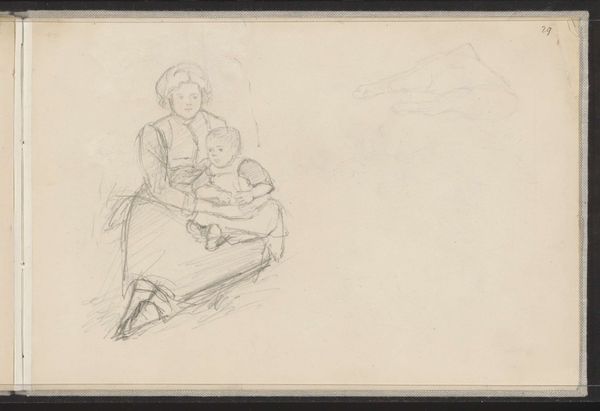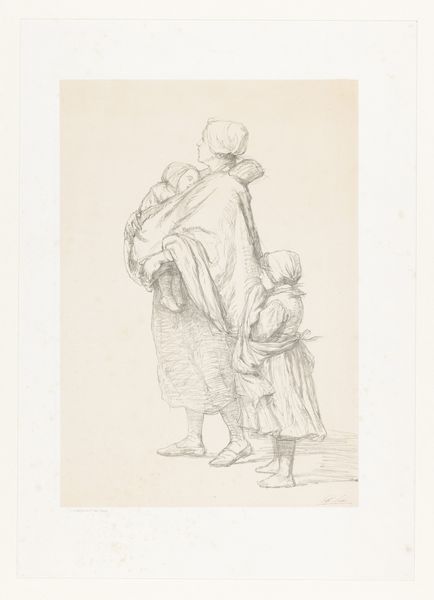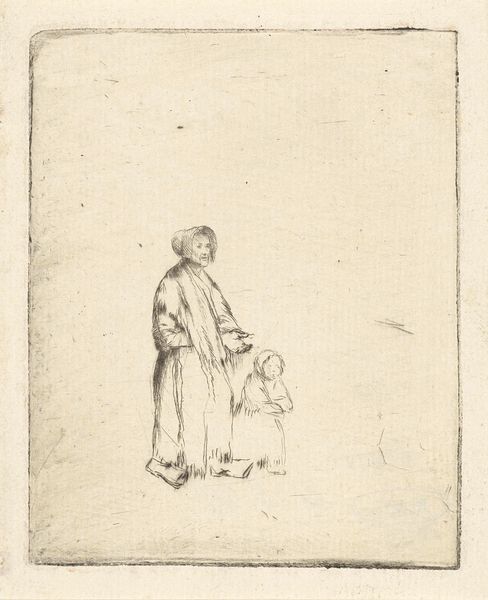
drawing, ink
#
portrait
#
drawing
#
mother
#
figuration
#
ink
#
romanticism
#
genre-painting
Dimensions: height 162 mm, width 120 mm
Copyright: Rijks Museum: Open Domain
Curator: Ernst Willem Jan Bagelaar, a Dutch artist working in the late 18th and early to mid-19th centuries, is credited with this ink drawing. Its title translates to "Mother with child in her lap" and, based on its style, probably dates from around the Romantic period. Editor: The first thing that strikes me is the tenderness captured in the scene despite the stark lines of the drawing. There's something deeply maternal radiating from the image; the protectiveness feels palpable, almost universal. Curator: Yes, that maternal aspect is something that artists in the Romantic period certainly loved to emphasize. Think about the socio-political context: Following revolutions and major societal upheaval, these types of depictions became incredibly popular as they centered on sentimental domesticity, reflecting ideals around family and the natural, "pure" state of motherhood, especially as a stabilizing force. Editor: It’s interesting that you point that out. Looking at the way the mother's head covering almost forms a halo and how she seems so isolated with the child…it really enhances this idea of a near-sacred bond. What strikes me further is the timelessness of this symbol; it transcends any single moment or fashion, evoking enduring ideas of mother-child relationships. Curator: Definitely, there is a conscious manipulation of imagery going on to elicit those sentiments. By situating them in the sphere of genre painting, where the familiar and everyday could gain moral authority, the artist and institutions are working to reinforce certain societal structures. Editor: Precisely! Notice also how the very limited detail makes this a general figure, rather than a specific mother in a specific time; and how, with sparse elements like the rough stool and bundled clothing, he’s hinting at a world where even simple security cannot be taken for granted. That tension is, in many ways, at the heart of the Romantic sensibility. Curator: I find myself contemplating how audiences across centuries perceive this image. Its availability, via the print, makes this familial ideal accessible, spreading Bagelaar's representation of motherly love across communities in an unprecedented way. Editor: In sum, this drawing seems to speak to the eternal role of maternal protection during precarious times, tapping into deeply held human emotions surrounding safety and connection, all expressed through carefully deployed symbolic forms.
Comments
No comments
Be the first to comment and join the conversation on the ultimate creative platform.
